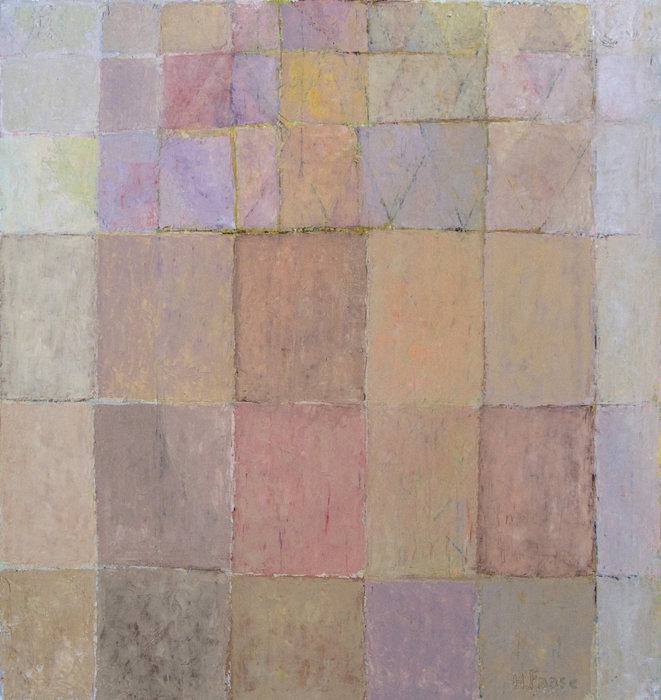"Drawing and color are not distinct from one another; gradually as one paints, one draws.
The more harmonious the colors are, the more precise the drawing will be.
Form is at its fullest when color is at its richest.
The secret of drawing and modeling lies in the contrasts and
affinities of colors."

Nocturne
Line & Color
The classical point of view, still based on visual aspects, ethics and iconography, hardly plays a role in the discussion of ‘what is art’. For some Modern Western Art did become a branch of philosophy, practiced with objects and materials , and there are strong disagreements as to what art should be. (See also: Art Talk, Reflections on Changing Ideas on this site)
However, the question 'what is Art' is of all times. Already in the 16th century in Italy one discussed the subject of invenzione, disegno and colore.
The behavior’s share plays a role. Someone with a literary point of view will especially see whether the story
is represented convincingly, while a painter first looks at the composition and later studies the narrative.
In the 16th century the painters of the Tuscan school (Michelangelo) were confronted with the painters of the Venetian
school (Titian) in a discours about line and colour.
In the 17th century it was all about the Poussinistes (line) and the Rubénistes (colour). In this discussion the line rather
refers to design and harmony than to modeling and expressiveness of drawing. When outdoor landscape painting
became a favourite topic in the 19th century the art of Poussin was very popular. One admired his harmonious
landscapes in combination with the classical tradition of the old masters.
The statement of Cézanne ‘…to re-do Poussin after nature…’ has more to do with a shared aesthetic conception of a
tradition of order and discipline than with a realistic representation of the classical narratives.
Early 20th century the discussion was about the work of Cézanne. The literary tradition, as the main subject for paintings,
was not interesting any more and many painters begin to experiment. In half a century a rich and comprehensive
form/color vocabulary has been developed.
Cubism let go of the subject, the subject is divided into fragments and the fragments create their own art. Art becomes
abstract but remains rooted in the pictorial tradition. The possibilities of abstract art are explored. While analysing the
visual aspects of colour fields, lines and rhythms; the ancient discourse about color and line is relevant again.
The pure abstractions of Mondrian and Malevich are still rooted in the tradition of painting. By reducing a representation to line and form, the visual aspects/laws of harmony are made visible. Malevich develops an extensive teaching program.
The later abstraction of the second half of the 20th century has quite a different starting point. This has to do with a shift from questions about visual aspects towards finding answers to the question ‘what is Art’. On theoretical grounds abstract art had to avoid any kind of representation or naturalism, it had to be completely non-figurative .
American painters followed the Art developments in Europe. Their aim was to find a specific American Art and a modern abstraction, free from figuration and tradition, could be the beginning of it.
Kenneth Clark made a study of the history of ‘The Nude’ through the ages.
He wonders why certain poses come back over and over again and whether that is a question of form and style.
Already in the 5th century B.C. Greek sculptors were facing the problem of how to depict the human body and
emotion without loosing the geometrical clearness of individual form. They searched for the expressiveness of the
pose itself.
Clark mentions Titian who made a series of declining nudes. One would expect that the ‘painter of sensuality’
would be able to render many different poses, but the variety of poses in which he achieves that perfect unity is limited.
This is probably due to the fact that geometric clearness and balanced proportions restrict the possibilities for variation.
Rubens, who studied Titian’s work and vocabulary intensively, often starts from similar poses but with his sense for colour
and rhythm, he has a different approach.
He had a theoretical sketchbook, which shows how he modeled his art after the works of the antique and modern masters
of Italy.
The work of the great masters has been an example for many painters. They have studied or copied the work of their favorite
predecessors and often took it as a basis for their own work.